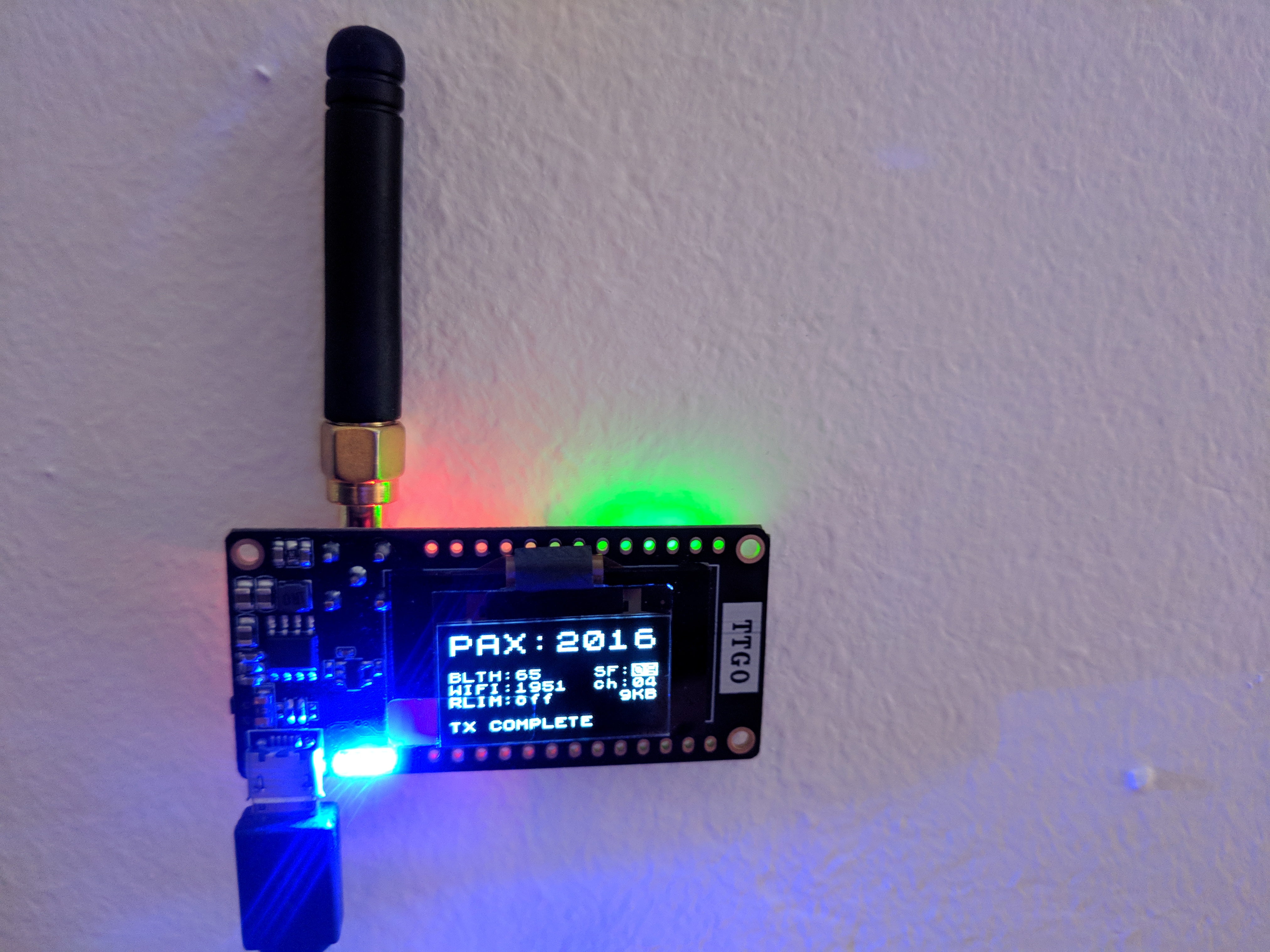TTGO v2.1 running the paxcounter TTN software in an environment with dense footfall
2 Likes
TTGO v2.1 running the paxcounter TTN software in an environment with dense footfall